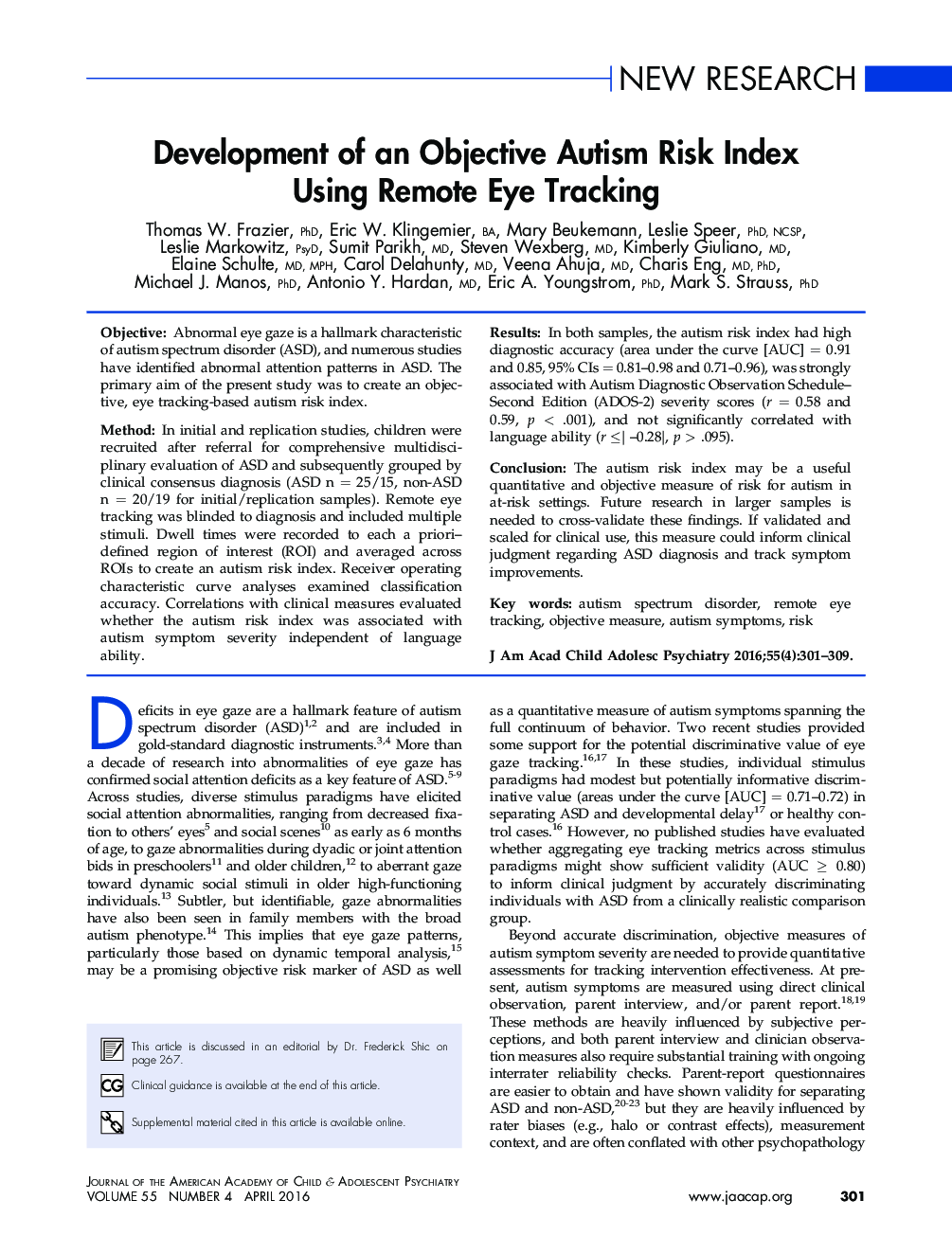| Article ID | Journal | Published Year | Pages | File Type |
|---|---|---|---|---|
| 324478 | Journal of the American Academy of Child & Adolescent Psychiatry | 2016 | 9 Pages |
ObjectiveAbnormal eye gaze is a hallmark characteristic of autism spectrum disorder (ASD), and numerous studies have identified abnormal attention patterns in ASD. The primary aim of the present study was to create an objective, eye tracking-based autism risk index.MethodIn initial and replication studies, children were recruited after referral for comprehensive multidisciplinary evaluation of ASD and subsequently grouped by clinical consensus diagnosis (ASD n = 25/15, non-ASD n = 20/19 for initial/replication samples). Remote eye tracking was blinded to diagnosis and included multiple stimuli. Dwell times were recorded to each a priori–defined region of interest (ROI) and averaged across ROIs to create an autism risk index. Receiver operating characteristic curve analyses examined classification accuracy. Correlations with clinical measures evaluated whether the autism risk index was associated with autism symptom severity independent of language ability.ResultsIn both samples, the autism risk index had high diagnostic accuracy (area under the curve [AUC] = 0.91 and 0.85, 95% CIs = 0.81–0.98 and 0.71–0.96), was strongly associated with Autism Diagnostic Observation Schedule–Second Edition (ADOS-2) severity scores (r = 0.58 and 0.59, p < .001), and not significantly correlated with language ability (r ≤| –0.28|, p > .095).ConclusionThe autism risk index may be a useful quantitative and objective measure of risk for autism in at-risk settings. Future research in larger samples is needed to cross-validate these findings. If validated and scaled for clinical use, this measure could inform clinical judgment regarding ASD diagnosis and track symptom improvements.
